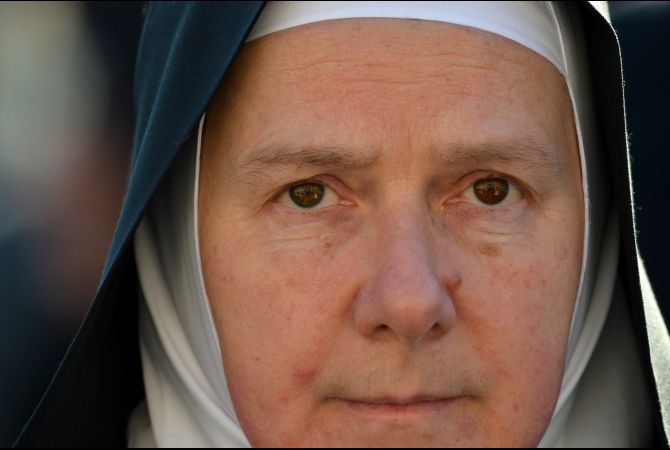Vatican's Looming "Inquisition" Reveals a Fractured Catholic Church
Global Post
Over the last half century, the place known as Holy Wisdom Monastery in Westport, Wisconsin, has changed as the Catholic Church has changed. And today as history is made with Pope Benedict XVI resigning, the first pontiff to do so in 600 years, this simple, white building here with its modern architecture is a symbol of a global Catholic Church that is deeply polarized, and which some fear could even be fracturing. But it wasn’t always that way. In the early 1950s, Holy Wisdom Monastery was a Catholic girls’ school run by the Sisters of St. Benedict. In time, the school closed, and in 1966 the sisters, spurred on by the reformist ideals of the Second Vatican Council, transformed it into a retreat center, one that thrived in the confident spirit of a church opening its windows to the modern world — the metaphor used by Pope John XXIII in summoning the world’s bishops to the council in Rome. In the 1990s, the nuns there established a strong interfaith spirit, they undertook a rigorous environmental effort toward “sustainability’ and they welcomed gay couples into the church and its services. By the year 2000, the nuns transformed the monastery into an ecumenical institution, welcoming a Presbyterian woman minister. And that was the point at which they crossed an irreversible line. Having a Protestant woman ministering in the community threw their identity as a Catholic women’s order into question. The sisters decided to leave the diocese and end their formal affiliation with the Catholic Church. As they saw it, they were maintaining the monastic ideal of Benedictine spirituality by opening the place to others. In the process of leaving the Catholic Church, the nuns made their own power move, of sorts. They held onto the deed to the land with the position that their faith community was true to the interfaith spirit of Vatican II. Their message, though never formally stated, was sledgehammer blunt: the male hierarchy has gone backwards and we’re moving forward. They quite literally held their ground. “As they set out to change the nature of the community,” explains the head of the community, Sister Mary David Walgenbach, “We received emails from all over the place. Some positive. Others thought we fell into hell for sure. But that’s just the way it is. Some people are future-oriented, broad-minded and deal with diversity and other people have a set, black-and-white perception.” Today, as cardinals trailed by clergy abuse scandals in many countries arrive in Rome these divisions are laid bare. A half century after Vatican II, the church, led first by John Paul II and then by Benedict, reversed the council’s reformist ideals and particularly a spirit of collegiality with bishops that the reformist council brought forward. These two popes dispensed of Vatican II’s collaborative model of dialogue and exchange on matters of doctrine and policy and instead imposed loyalty tests on prospective bishops on matters like celibacy and women’s ordination. And under Benedict, the leadership of American nuns became the target of a sweeping investigation into what was seen as a form of “radical feminism” that was too questioning of church teaching and too focused on social justice causes. From the Vatican’s point of view, many of the nuns were carrying themselves in a way that was tantamount to heresy. The investigation was, as some theologians saw it, ‘a new inquisition.’ And the Vatican took control of the umbrella organization known as the Leadership Conference of Women Religious. The group has 1500 members who represent more than 80 percent of the 57,000 nuns in the United States. With the resignation of Benedict, the old-guard prelates who led the probe into the standing allegations against the nuns will have no authority to continue their work. That is, unless a new pope requests them to do so. As of tomorrow, the chair of the Vicar of Christ will be empty and the world’s 1.2 billion Catholics will enter a period known as “sede vacante,” or, “the seat being absent.” In that interim, as the college of cardinals prepare to elect a new pope, the Leadership Conference of Women Religious, or LCWR, is hopeful that the church might take a new direction. And specifically, the leaders are focused on maintaining the group’s canonical
|
.
Any original material on these pages is copyright © BishopAccountability.org 2004. Reproduce freely with attribution.
